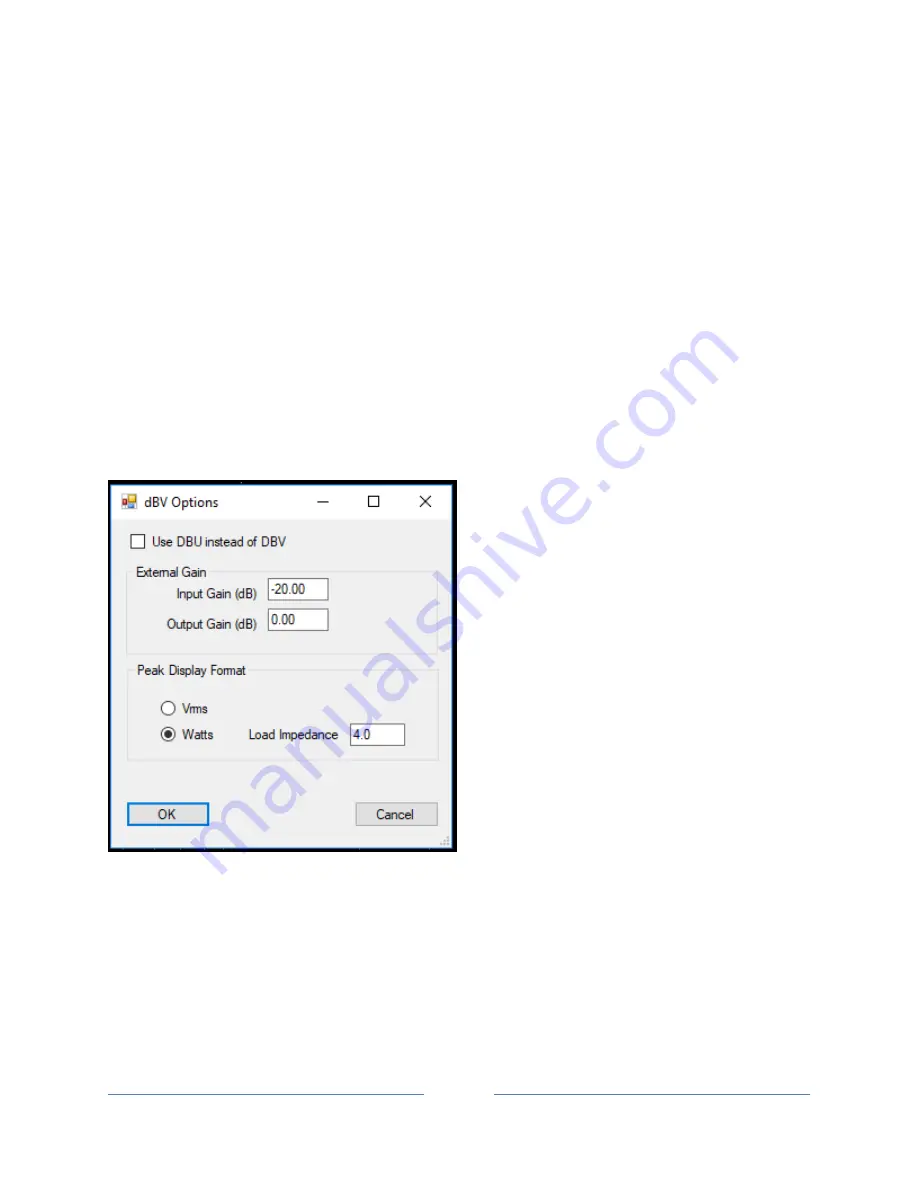
QuantAsylum QA401 User
’s
Manual
Page
49
Power Supply Noise Measurements
A common measurement to make is the output noise of a power supply. Recall the max DC input limit
previously discussed: It is critical to keep DC levels /-5V at all times, even if the attenuator is
engaged. Even though the input is AC coupled, connecting higher voltages will cause protection diodes
to activate for very short periods of time and the brief, high-current flows could damage the input stage.
The QA401 with the inputs shorted will report a 20 to 20 KHz noise reading of roughly -115 dBV, which is
about 1.8 uV. This is the lower bound of power supply noise that can be measured. Typical LDOs will
exhibit noise in excess of 50 uV in the audio band, while ultra low-noise LDOs will approach the limits of
the QA401 is very rare cases. State of the art today for LDOs is below 1uV in the audio band.
The safest way to measure the noise of a power supply is to use a resistor divider to drop the power
supply voltage to under 5V. For example, if you wanted to measure a 48V power supply you could use a
1/10
th
divider (20 dB) comprised of a 100 ohm lower resistor and a 900 ohm upper resistor. You’d then
report in the QA401 an external gain of -20 dB. This would be done in the Axis Settings button marked
dBV context menu as shown below
This would raise the apparent noise floor of the QA401 to about 18uV. This means that if your supply
was 48V and
had an expected noise measurement that was less than 18 uV, this technique wouldn’t
work. But higher voltages supplies that require this level of noise are rare.
For a 15V supply, if you used a 1/3 divider (-9.55 dB), the measurement noise floor would be about 5.4
uV (20 to 20 KHz) while keeping the input at or below the 5V limit.
Feel free to contact us at t
he support email if you’d like help in selecting
values for the divider.
















































